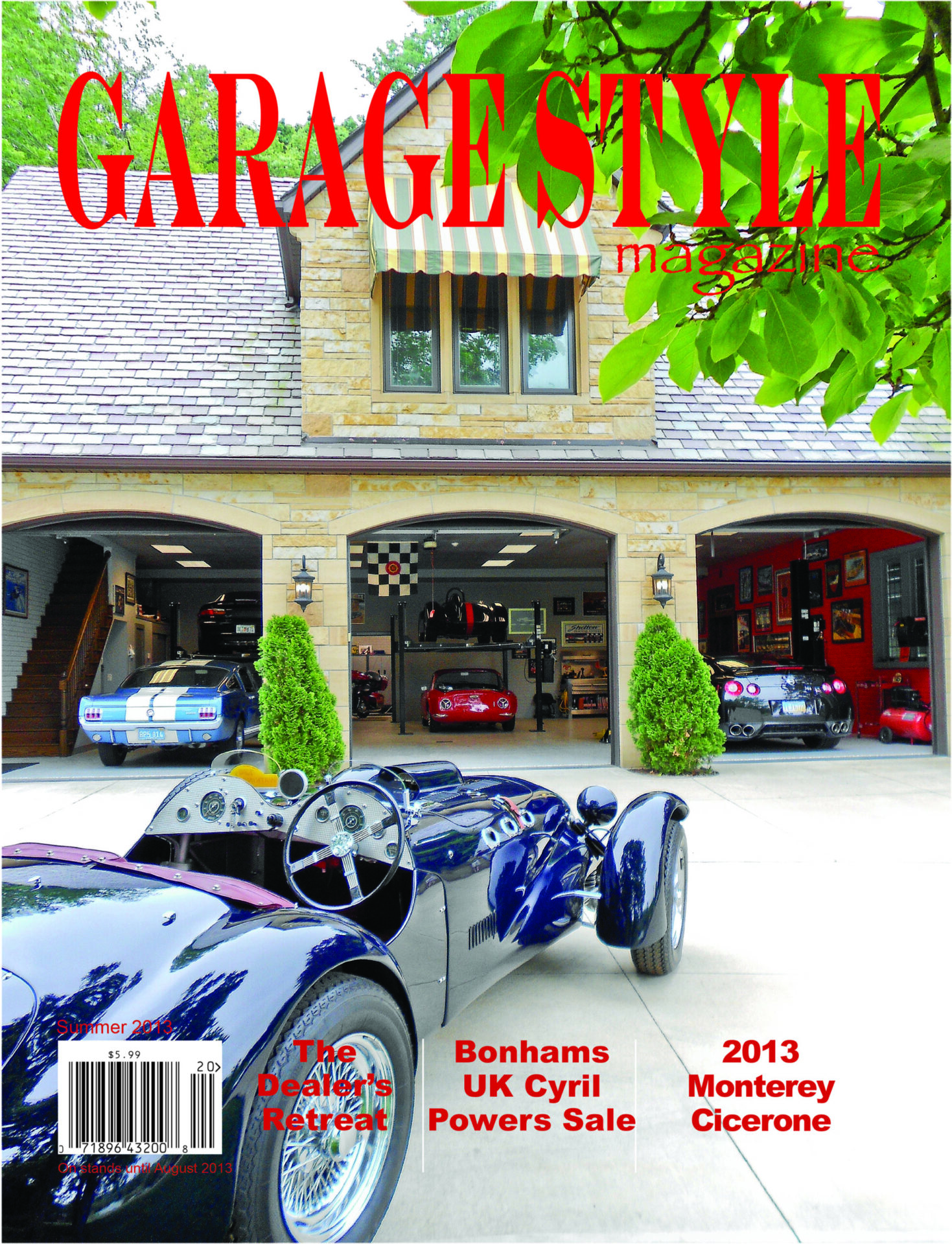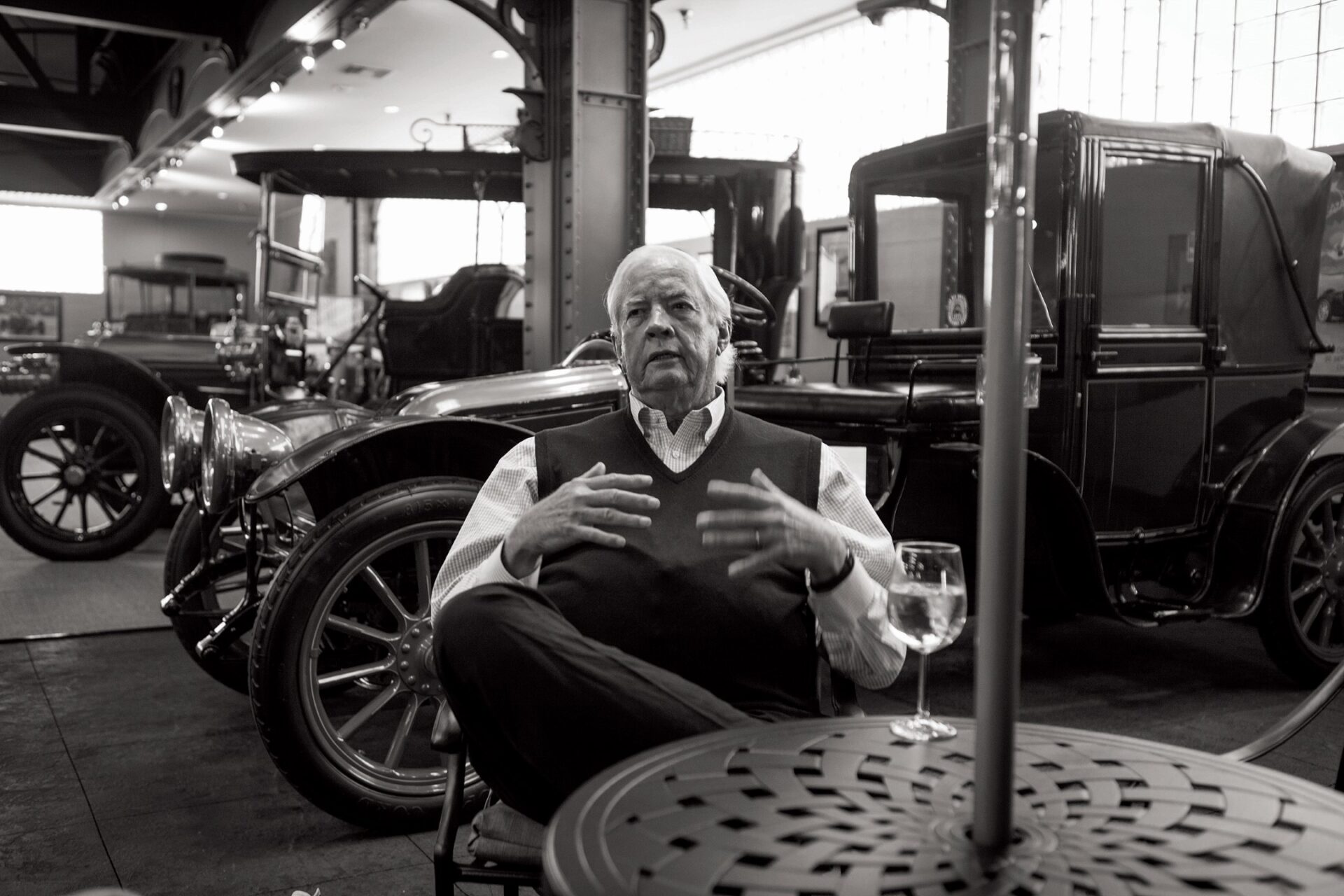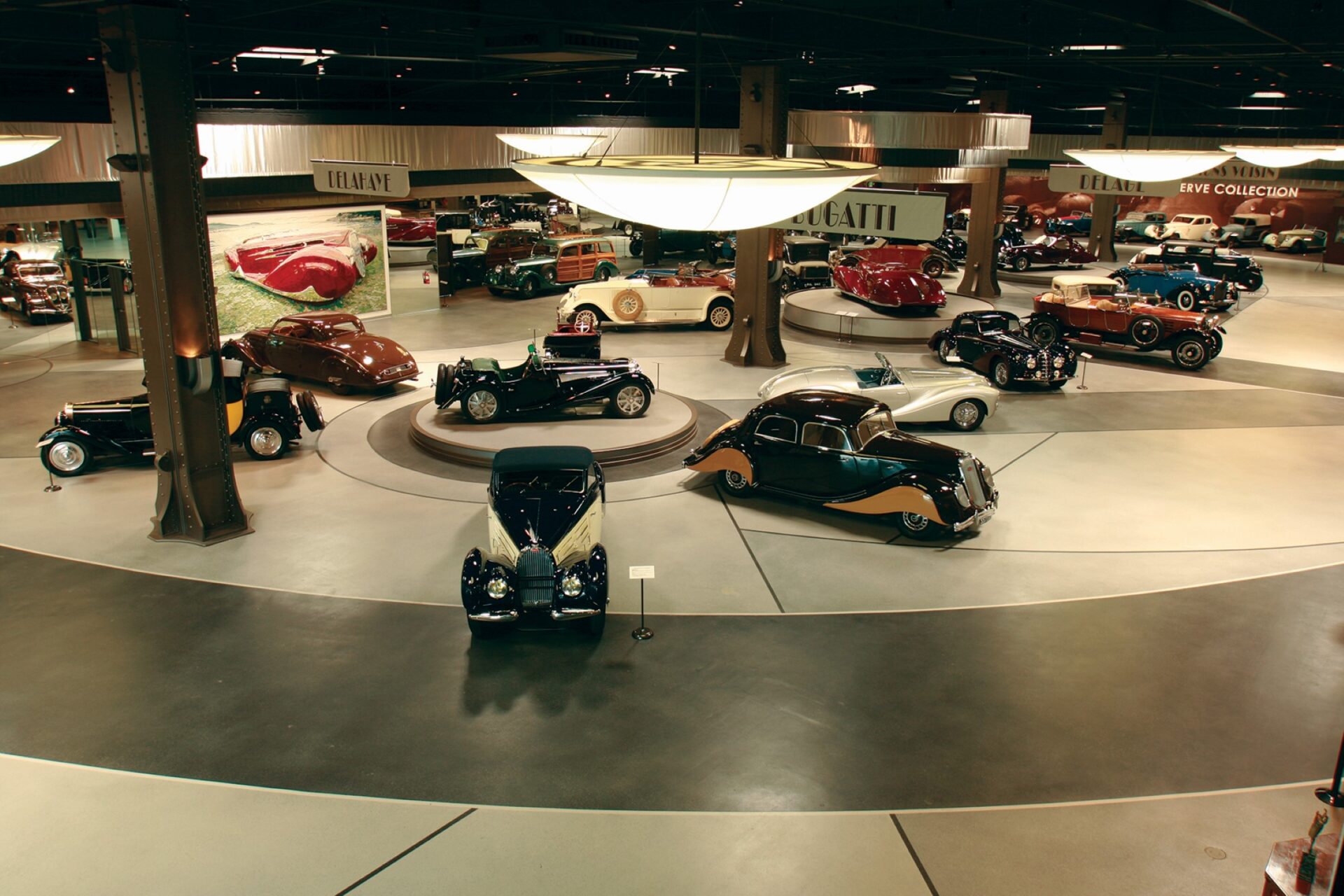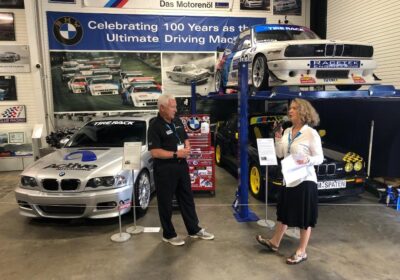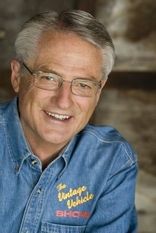Images by Dale Quinio
Peter Mullin has spent a major portion of his life collecting and safeguarding tangible elements from the Art Deco era, specifically those from France and Italy. Well renowned for his collection comprised of Bugatti, Delage, Delahaye, Voisin, and Hispano-Suiza automobiles, more recently he’s been involved in furthering the knowledge of these vehicles, and the era from which they hail, by founding the Mullin Automotive Museum in Oxnard, California. Fashioned in the industrial style so prevalent in the 1920’s and ’30s, the museum not only showcases beautiful vehicles and artifacts of the era, but serves as an educational and preservation resource for the era.

“It’s an honor to be a caretaker of these cars,” Peter said. “For future generations, these cars will tell of another time, and maybe help define futures and inspire design. That’s important.”
The South Pasadena, California native discovered his love for the Art Deco-era automobiles by allowing a photo shoot at the front yard of his home.
“They were using my home as a backdrop, and when I came home from work, they were all set up and working, and there was this green car that was just one of the most beautiful vehicles I’d ever seen in my life,” he said. “It was the Delahaye 135MS, and it absolutely astonished me.”

Striking up a relationship with the owner, they partnered on a restoration of a Talbot, which they entered into the Pebble Beach Concours d’Elegance together and were awarded 3rd. Soon, Peter was in the position to purchase the Delahaye that stole his heart.
“I’d always liked cars, but I’d never been exposed to a car like that,” he said. “It was something out of a dream, so to be able to buy it, was a real privilege.”
With his growing and honing interest in Art Deco, Peter began to study closely the entire movement, ranging from transportation engineering to glass art to fashion, and is continuing to learn, but is very well versed in the era. While many engineers and designers from the time have captured his fancy, in particular it would seem that Gabrielle Voisin would be his favorite.
“He was an amazing man, he not only built what was at the time the world’s most expensive automobile, but he also developed arguably the first controllable airplane, very interestingly, he developed anti-lock brakes for airplanes,” he said. “Especially back then, airplanes had a tendency to tip onto their nose if the brakes were applied to hard, so having a system that alleviated some of the brake pressure was very effective. His company built about 10,000 aircraft for the Axis Powers in World War I, and in about 1919 he began working with automobiles. He also put up the money for Corbusier to redesign Paris, a project that was never accomplished due to its expense and involvement, but the effort behind the idea is tremendous.”
Not unlike Voisin, the student seems to emulate the teacher with Peter. He’s a driven and passionate personality with an otherwise subdued, subtle tone. His devotion to the Art Deco era and efforts to preserve and share it with others speaks volumes for his drive. Professionally, his work in founding a company that re-insures insurance companies who cover high net worth clients, M-Financial, and working on the boards of many well-known companies demonstrates an interest in forwarding projects and making a difference for the future to follow. In spite of his business prowess, Peter seems most comfortable talking about cars, engineering, travel, wine, and olive oil, the latter two of which he owns vineyards for in Europe.
“Business is work, but when your work is enjoyable and provides something sustainable, that’s when it’s more than enjoyable, it becomes fulfilling, satisfying.
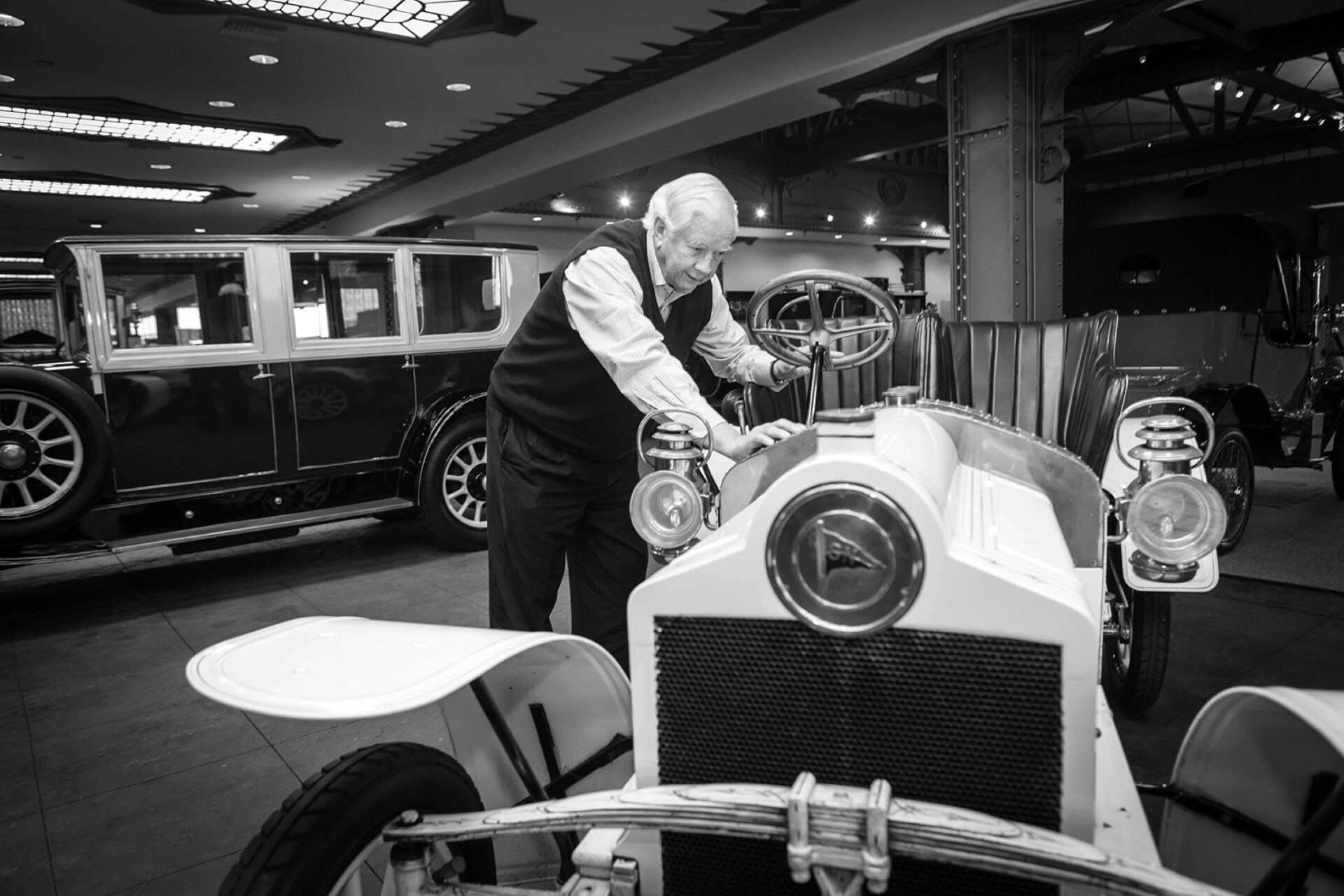
Touring the Mullin Museum easily reflects a major bit of Peter’s interests, lending insight to his overall mindset. While his interest in Voisin is borderline obsessive, nearly the same can be said for his interest in the Bugatti family. He’s devoted a lounge and special areas to the work of the Bugattis, which includes various pieces of exquisite furniture and art pieces, and, of course, the cars. One Bugatti of particular interest is the 1925 Bugatti Brescia, a sporting car that spent about 70 years on the floor of Lake Maggiore on the Italian-Swiss border. The history is what legends are made of, and the Museum’s efforts to preserve the vehicle and halt further erosion is evidence of its’ interest in securing knowledge for the future generations. Also included in the Mullin Museum are several examples of Talbot Lagos, and a few Delahaye and Delage vehicles. But, it’s interesting to note that Peter’s personal office in West Los Angeles serves as a private museum itself, but not to the swoopy, gleaning machines of the Art Deco period; rather, the early efforts from Renault, Hispano, and more call the office home. These early cars are swathed in brass, with bulging radiators, colossal headlights, massive tires, comically tall profiles, and ground clearances to make a monster truck proud. The interior of the building itself closely resembles an original exhibition hall in Paris, reflecting an industrial revolution motif with steel beams overhead, expanses of glass-look ceiling, and mood lighting. He’s even installed the Mullin Rouge Café and Bar.
“These cars are very special, not only are they some of the earliest examples, but in being so, they were the precursors of things to come,” he said. “Some of the technology found in the later cars began with these cars.”
Once again, he illustrates the important role history has played in shaping futures, and that it’s still largely important to continue doing so.
“We need to preserve history if we’re going to ensure a future,” he said.
